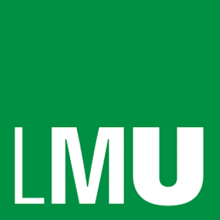Munich’s leading universities have pledged to dial back their long-standing rivalry and instead coordinate a joint research strategy, the latest sign that Germany’s excellence initiative is spurring the creation of citywide science plans, rather than universities going it alone.
The medieval LMU Munich and its 19th-century rival, the Technical University of Munich (TUM), have committed to what is called the “One Munich Strategy” and will jointly open a biofabrication research centre with other city partners.
The universities still see some benefits in healthy rivalry. “We both need that to improve ourselves,” said Thomas Hofmann, president of TUM.
But their view is increasingly that competition between Munich and the likes of Boston or San Francisco is more important than pitting LMU against TUM.
“In the future, next to this competition, our strategy needs cooperation,” Professor Hofmann explained. As publicly funded bodies, “it would be wrong not to do it” to maximise the social impact of research.
At the end of April, the two universities announced that they would join a “One Munich Strategy Forum”, which will meet three to four times a year, to scope out emerging fields where Munich could be a world leader within three to five years.
The first joint project is “Munich BioFab”, a network of researchers in synthetic biology who may move into a shared building within two to three years. Other partners include the Max Planck Institute for Biochemistry, Helmholtz Centrum Munich and the Munich University of Applied Sciences. Another two common projects are set to be announced this year and next.
The shift towards collaboration was driven by the changing nature of research, said Professor Hofmann, and the need to link up researchers in large-scale cross-disciplinary centres. “We still need strong disciplines, but we need better tools to connect the scientists,” he explained.
This had already happened in London, he pointed out, with several universities including UCL, Imperial College London and King’s College London pooling resources to create the Francis Crick Institute, a biomedical research centre. Harvard University and the Massachusetts Institute of Technology have joined forces to create the Broad Institute, which focuses on human biology and genomic medicine.
Munich’s move to coordinate its universities’ strategies mirrors developments in Germany’s capital, which has a “Berlin University Alliance” to open joint research centres and create joint master’s programmes.
The drive towards citywide research plans in Germany has been spurred by the country’s excellence strategy, a funding initiative that since 2007 has sprinkled extra money and prestige over a handful of “excellent” universities.
The aim is to inject more competition into German higher education and to fashion an internationally recognised elite out of a traditionally egalitarian system.
But at the same time, the excellence strategy has also funded university partnerships known as “clusters of excellence”, and this has driven universities to coordinate their activities. LMU and TUM already boast four joint clusters of excellence, focusing on research areas including quantum science, batteries and the origins of life.
Also backing the plan for a “One Munich Strategy” is the Bavarian government, which has said that it wants to make Munich the “world’s leading centre for artificial intelligence” as part of a €2 billion (£1.7 billion) plan launched in 2019 to stimulate “high-tech” research, including an extra 1,000 professor positions by 2023.
Register to continue
Why register?
- Registration is free and only takes a moment
- Once registered, you can read 3 articles a month
- Sign up for our newsletter
Subscribe
Or subscribe for unlimited access to:
- Unlimited access to news, views, insights & reviews
- Digital editions
- Digital access to THE’s university and college rankings analysis
Already registered or a current subscriber? Login











